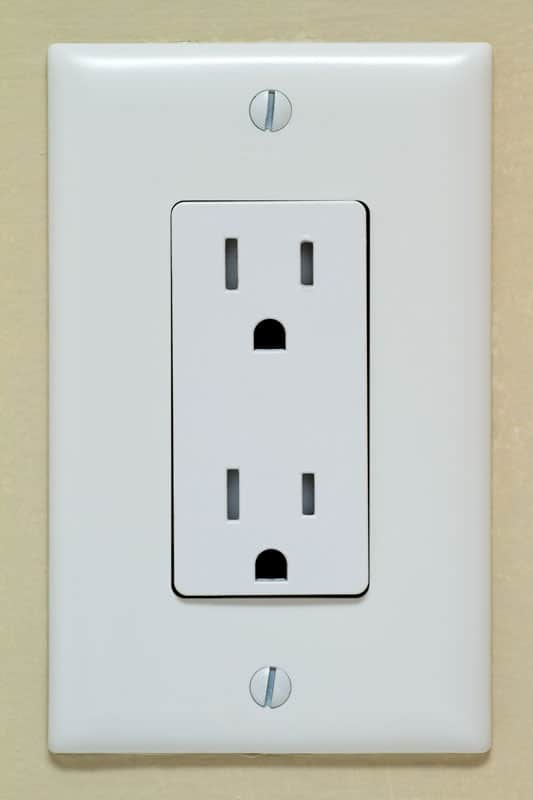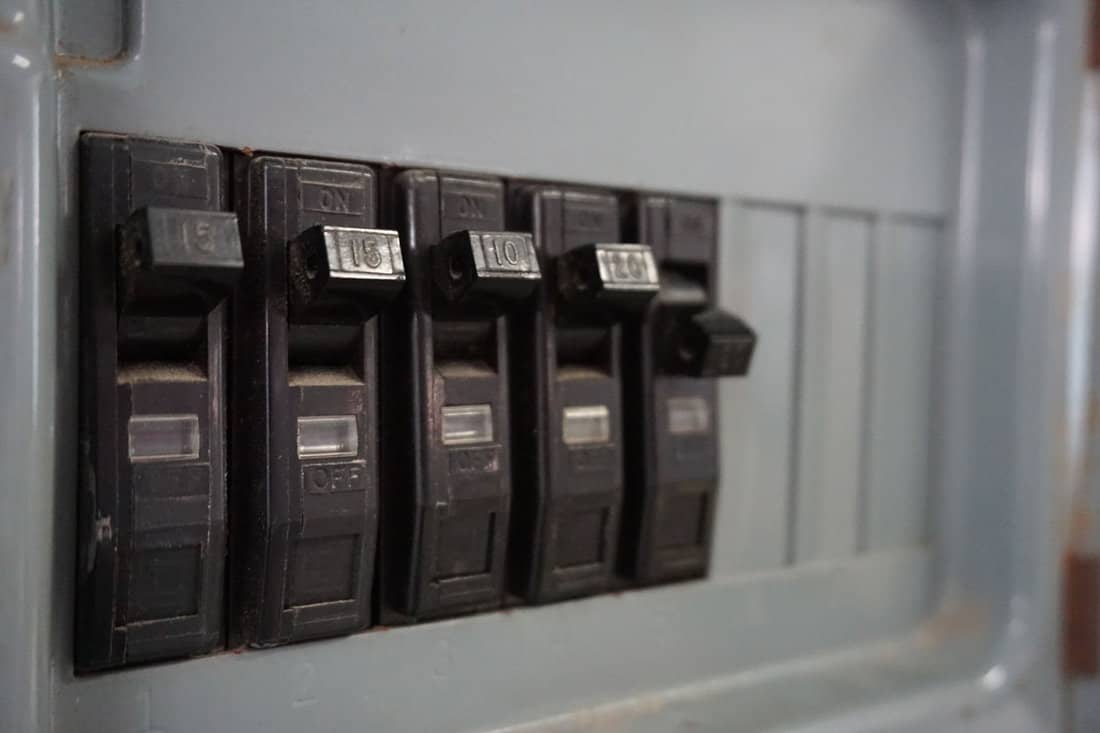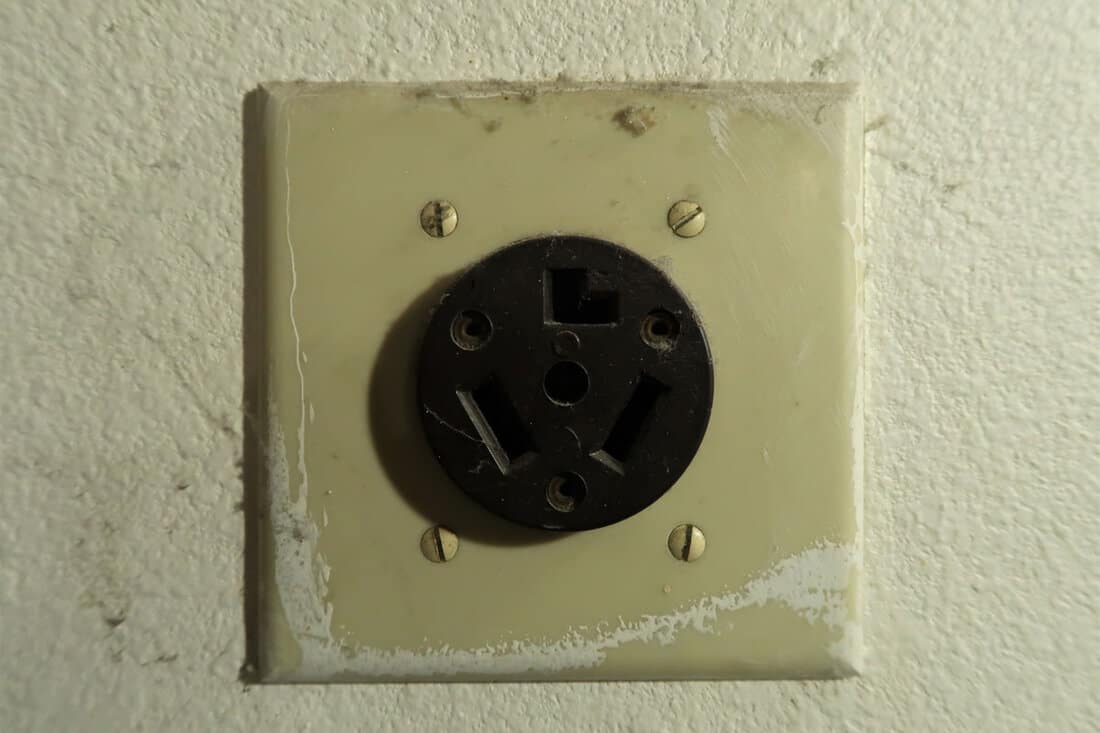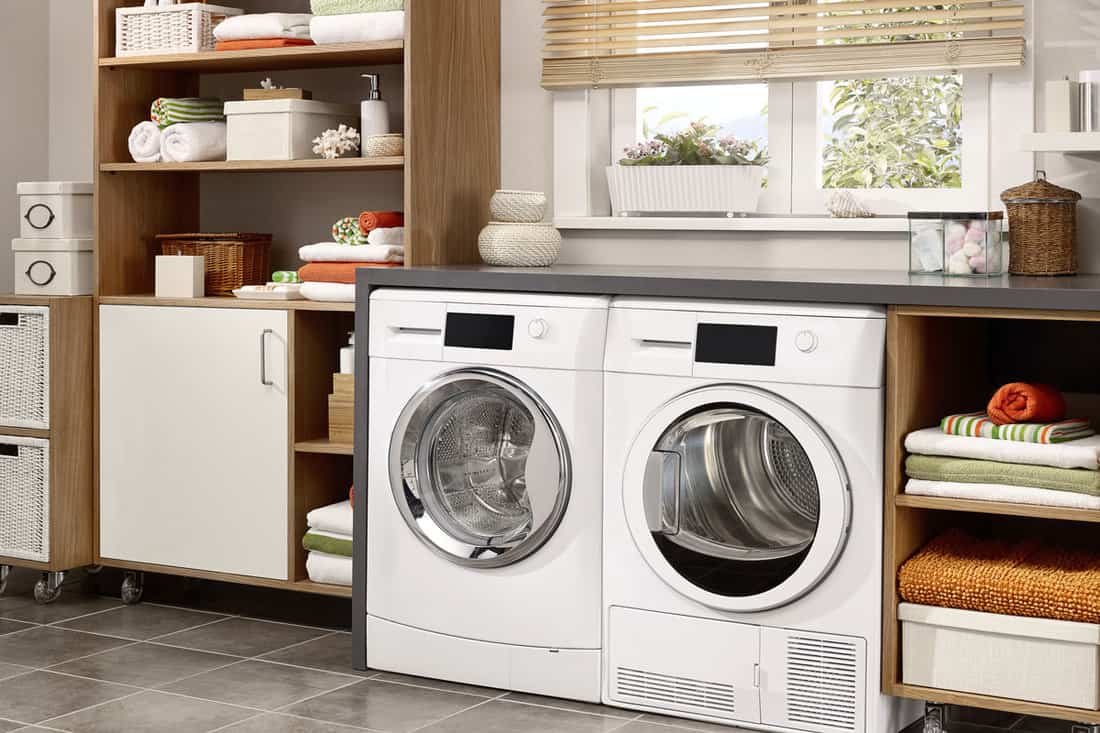Are you trying to determine what outlets you have in your home and which types you need to add? Well, you've come to the right place. We've put together this guide to help you figure out the difference between 110-volt and 220-volt outlets.
110-volt outlets are fairly standard outlets. They're smaller than 220-volt outlets and use a higher current but at a lower voltage.
220-volt outlets are larger and used to power large appliances like electric dryers and ranges. They use a larger voltage with a smaller current.
So how do you tell which outlet you have and which one you need? And what does each outlet look like? Keep reading to learn all about these outlets and their differences.

How Can You Tell Apart 110-Volt And 220-Volt Outlets?
110-volt and 220-volt outlets look very different and are pretty easy to identify. 110-volt outlets are much smaller and usually have room for two three-prong plugs stacked vertically.
220-volt outlets are large, and they are available in varieties that can accommodate three or four-prong plugs.

We sometimes add affiliate links and content that was curated and created by our team with the help of advanced ai tools to help showcase the best design styles.
What Type Of Outlet Do You Have?
Most modern homes offer both 110v outlets and 220v outlets. 110v outlets are the most common type of outlet in homes throughout the US and are considered fairly standard.
220v outlets are used more sparingly but are still a standard feature that is required to run large appliances.
This video does an excellent job of showing and identifying the different types of common outlets, including 220v and 110v outlets:
What Type Of Outlet Do You Need?
To figure out what type of outlet you need, read the specifications included with the device you are trying to plug in.
The instruction and user manuals included with appliances and devices will specify the outlet and electricity requirements required to run the device safely.
An electrician will also be able to help you determine the requirements for your project and will assist in planning the wiring layout.
BESTEN 10-Pack 110-Volt Receptacles
This 10-pack of 110-volt outlets is a great option if you're looking to update the outlets in your home. Their tamper-proof design makes them a very safe option that will help protect curious children and pets.
Click here to take a look at these outlets on Amazon.
Which Is Better, 110-Volt or 220-Volt Outlet?
110-volt outlets are a safer option because they are less likely to cause shocks, but they aren't going to work for every device.
For instance, you can't plug your dryer into a 110-volt. It simply won't fit. The most important factor to consider is the requirements for the specific device or appliances you are trying to operate; make sure you follow the product recommendations.

What Appliances Run On 220-Volts?
Many large appliances require a 220-volt outlet to operate. Dryers, electric ranges, water heaters, and even some refrigerators require 220-volt outlets.
Some of these appliances may require even larger 240-volt outlets for safe operation, which is why it's so important to follow the installation and operating instructions included with your purchase.
While shopping for electronics or appliances, check the manufacturer's recommendations on power sources.
ENERLITES 50 Amp Outlet
This common outlet style for 22o-volt applications works for various appliances. It's also impact-resistant and heat-resistant for safety purposes.
Click here to take a look at this outlet on Amazon.
What Happens If You Get Shocked With 110-Volts?
A shock containing 110 volts will cause muscle spasms and discomfort, but for a healthy adult individual, it's unlikely to cause significant damage.
For children and small pets, it can be a serious health concern, so make sure your outlets are covered and protected if you have little ones in your home.
As voltage increases, the effects of a shock get more dangerous and can cause more serious medical issues like burns.
What Happens If You Get Shocked With 220 Volts?
A shock from a 220-volt outlet is enough to kill an adult, so it's even more deadly for children and pets.
While it is not always fatal, it can also result in other complications like electrical damage to the brain, which carries other health issues and disorders.
This is one of the reasons why hiring professionals to perform electrical work in your home is vital.
How Much Does It Cost To Change 110-Volt To 220-Volt?
It typically costs between $135-$305 to have a professional swap out your 110-volt outlet for a 220-volt.
It will involve swapping out the size of the wire that runs from your breaker box to the outlet location.
This project needs to be done by a professional, and a do-it-yourselfer should not attempt it.

What Voltage Is A Standard House?
The majority of newer homes and homes that have modern updates are complete with 220-volt electrical service.
This means that many of these homes will already have 220-volt outlets in them somewhere, and installing new ones or relocating existing outlets is possible.
Older homes that haven't had a wiring update in the last 50 years or longer are more likely to contain wiring with 110 or 120-volt capabilities.
For older homes that need a wiring update, it's likely that you will need to replace the breaker box with a more modern one before you can start adding these larger outlets.
Consult with an electrician to find out what will need alterations and how to proceed with your project.
Can You Plug A 220-Volt Into A 110-Volt Outlet?
No, a 220-volt plug used in a 110-volt outlet will cause serious damage to the electronic device.
220-volt outlets won't fit into a 110-volt outlet without much effort and force, which can damage the outlet.
If the outlet cracks or breaks, it could shock whoever is trying to insert the plug and cause injuries.
BESTEK 220-Volt To 110-Volt Converter
This converter is perfect for traveling to countries that use a different type of plug or outlet system.
It also claims to work as a way to convert 220-volt US outlets to 110-volt US outlets, which could be handy in a variety of circumstances.
Click here to take a look at this converter on Amazon.
Are Most Ovens 110-Volt, or 220-Volt?
Most electrical ranges are 220-volt. However, some gas ranges require access to a 110-volt plug to ignite the gas.
When shopping for ovens or planning electrical work, make sure to find out the product's electrical requirements.
Have an electrician come and look at your current system and outlets to determine whether or not you need an upgrade.
Are Dishwashers 110-Volts or 220-Volts?
Dishwashers usually require a 110-volt outlet to run. However, some larger or more advanced models may require a 220-volt outlet.
Take a look at the plug on the dishwasher or consult the user manual to confirm what size outlet you need. You can also call the manufacturer of the machine to get information on the outlet requirements.

Do All Electric Stoves Require 220-Volt Outlets?
Yes, electric ranges consume a lot of power and require 220-volt outlets to operate.
Gas ranges don't always require a source of electricity, and many operate entirely on gas alone. Some gas ranges need access to a 110-volt outlet to create the spark necessary to light the gas.
These make an excellent choice for anyone who doesn't have the means to update their outlets immediately.
Do Washing Machines Need 110-Volts Or 220-Volts?

Washing machines almost always require a 110-volt outlet, making them one of the easier appliances to accommodate.
Combination washer and dryer sets typically need a 220-volt, and standard-sized dryers require a 220-volt or 240-volt to operate.
Apartment-sized or portable dryers can be found in 110-volt and 120-volt varieties that can be used to avoid electrical work.
In Conclusion

Now that you know how to tell the difference between a 110-volt and 220-volt outlet, you're ready to start planning your project with a professional.
Don't forget that electrical work needs to be done by a professional to ensure safety and prevent future complications. Good luck with your project, and enjoy your convenient new outlets.
You May Also Enjoy These Similar Articles...
For help determining where to install floor outlets in your home, read our article "Where To Place Floor Outlets In Living Room?"
To determine the correct number of outlets for every room, read our article "How Many Outlets Per Room Should There Be?"



